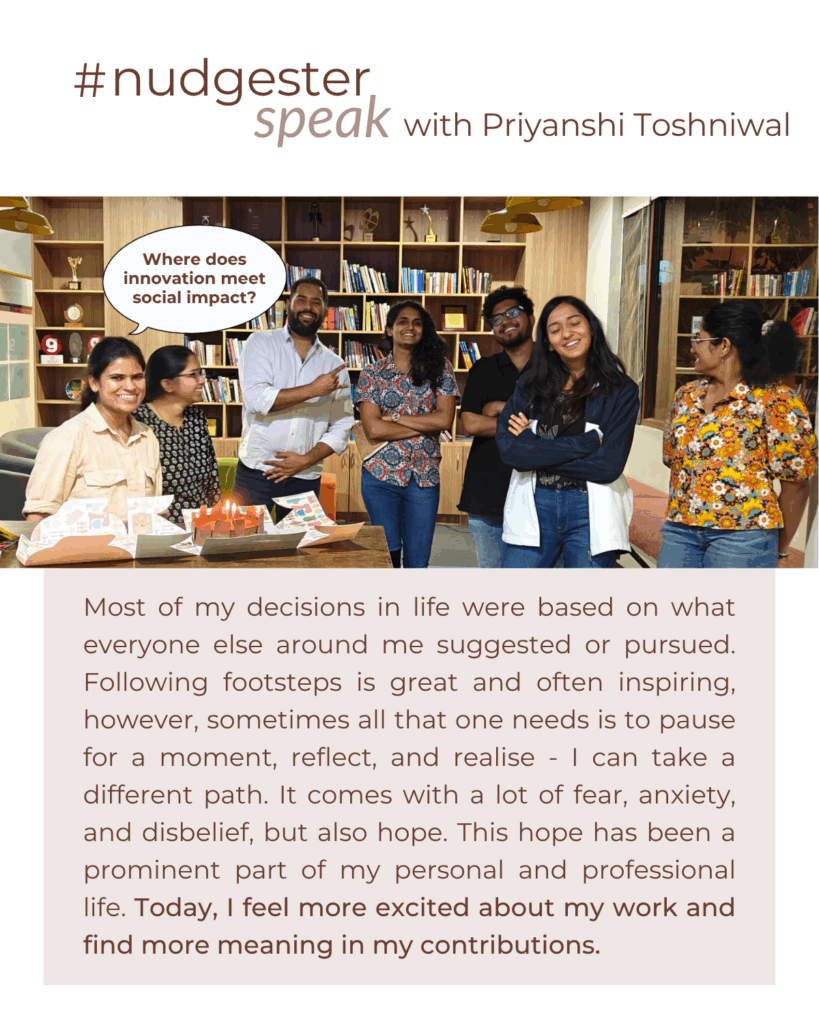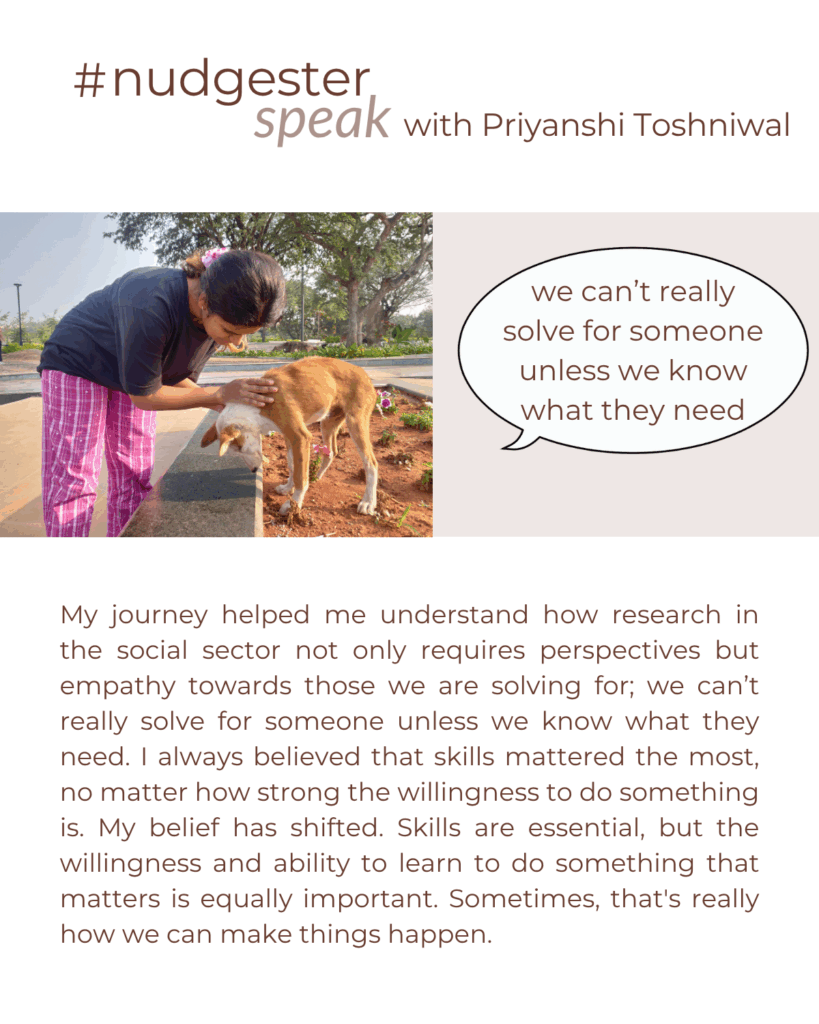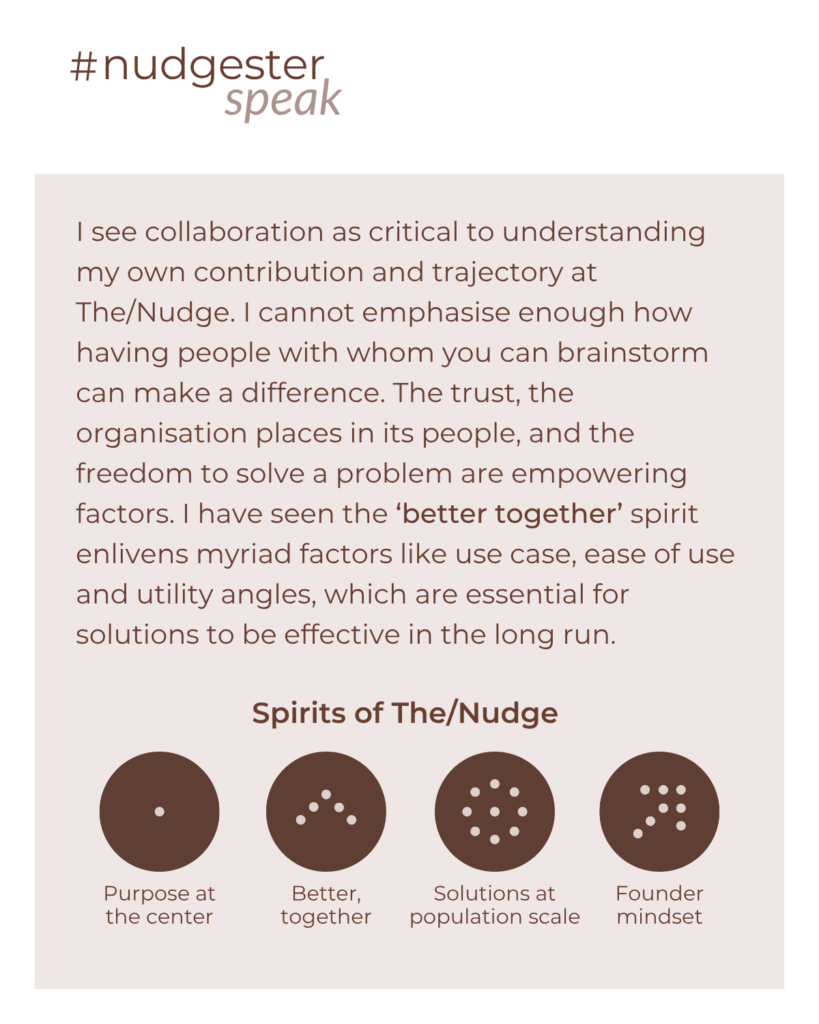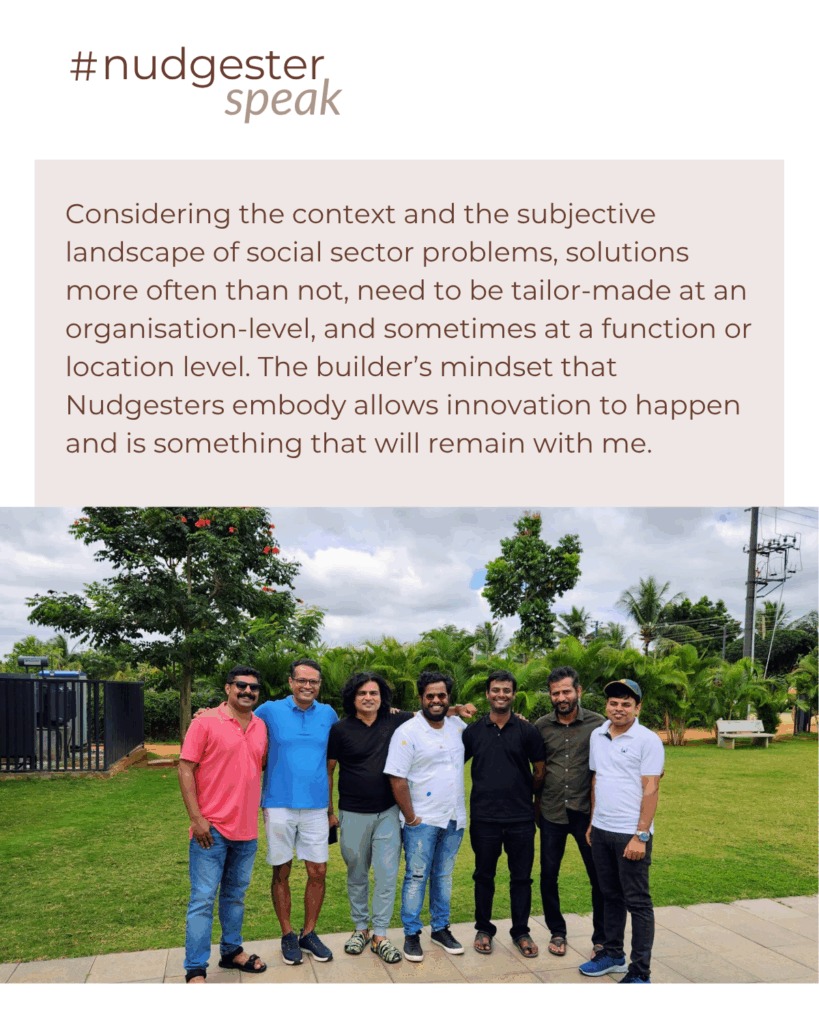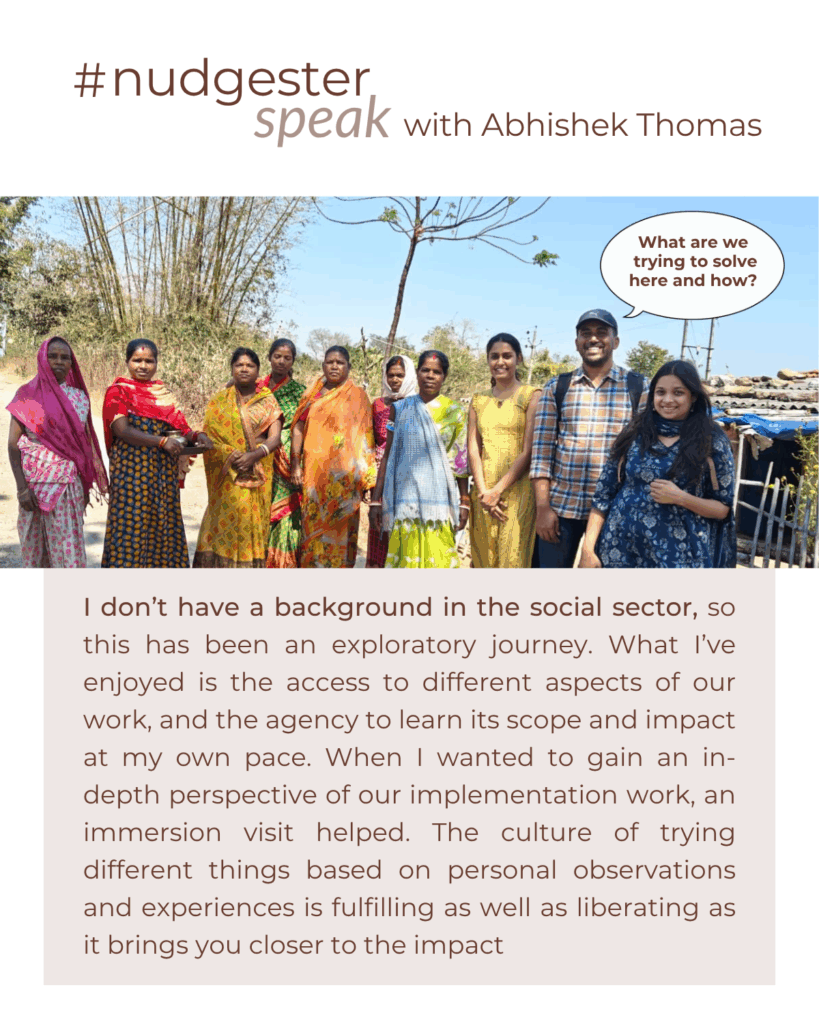Reading glasses and livelihood: challenges and pathways to scale access in India
Clear vision is indispensable for daily life and job performance. Whether it’s the intricate craftsmanship of artisans, the bustling operations of garment factories, the precision required by tailors, or the rigorous work in tea and coffee plantations, clear eyesight is a crucial asset. However, despite being a seven-century-old technology, over 150 million Indians lack access to reading glasses, nearly half of whom are part of the workforce in occupations requiring clear near vision. This lack of access significantly impacts livelihoods and potentially reduces the country’s GDP by $14 billion annually.
While the manufacturing cost of good quality reading glasses is low, the challenge lies in reaching the target beneficiaries, screening them, and providing the glasses. This significantly increases the overall cost. A scalable solution must address this issue through appropriate policy interventions, enabling and incentivising existing community cadres for screening and distribution, and developing best practices for effective on-the-ground execution

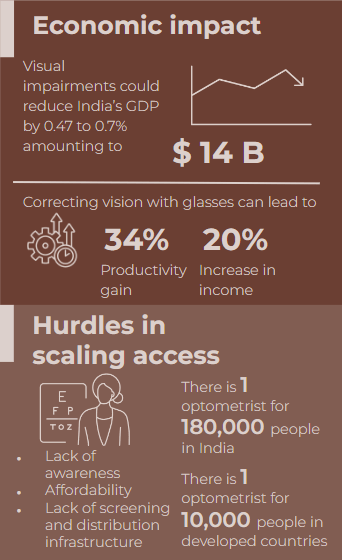
To address the unmet need for reading glasses at scale within a reasonable time frame, we must tackle large-scale distribution, unlock funding for expansion, build domestic manufacturing capacity, and create demand for market-viable solutions for repeat purchases. We believe that as a nation, we can achieve this goal within a decade with a cumulative investment of around $600 million, 90% of which can be funded through existing health and welfare schemes. This requires appropriate policy changes, earmarking of existing government funds for targeted programs, and leveraging the extensive community networks already established by some government cadres.
Philanthropic support will be crucial as a catalyst, especially for initial funding of reading glasses in the pilot phase, program management, technology development, and mass media campaigns. By engaging the right government stakeholders and departments, philanthropic capital can significantly amplify government funds, potentially leveraging up to ten times the amount.
Civil society organisations (CSOs) have done commendable work at the community level. Their grassroots efforts should continue for their community impact and expand to partnering for state-level targeted programs and supporting government community workers in training, awareness, and mobilisation efforts.

While the unorganised retail sector and inexpensive imports account for much of the Indian eyeglasses market in terms of volume, the organised sector has made significant progress in the last two decades by innovating for manufacturing and distribution. This is rapidly increasing access to high-quality eyeglasses at increasingly affordable prices. In this regard, we see market players playing a crucial role in expanding their reach and adopting innovative solutions to make eyewear more accessible and affordable. With the right ecosystem support, many SMEs can make domestic eyeglass manufacturing a thriving sector, further accelerating this journey.
By working together, we can significantly improve the quality of life for millions of Indians, enhance productivity, and contribute to the overall economic growth of the country.
While the manufacturing cost of good quality reading glasses is low, the challenge lies in reaching the target beneficiaries, screening them, and providing the glasses. This significantly increases the overall cost. A scalable solution must address this issue through appropriate policy interventions, enabling and incentivizing existing community cadres for screening and distribution, and developing best practices for effective on-the-ground execution.


Philanthropic support will be crucial as a catalyst, especially for initial funding of reading glasses in the pilot phase, program management, technology development, and mass media campaigns. By engaging the right government stakeholders and departments, philanthropic capital can significantly amplify government funds, potentially leveraging up to ten times the amount. Civil society organizations (CSOs) have done commendable work at the community level. Their grassroots efforts should continue for their community impact and expand to partnering for state-level targeted programs and supporting government community workers in training, awareness, and mobilization efforts.

By working together, we can significantly improve the quality of life for millions of Indians, enhance productivity, and contribute to the overall economic growth of the country.



